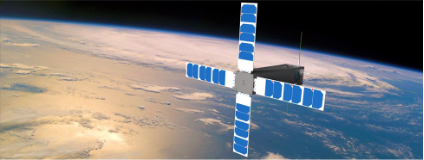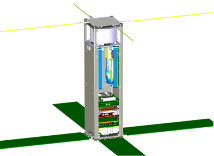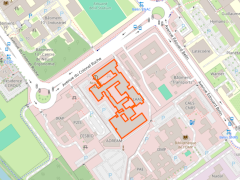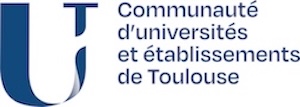Embedded systems for space applications platform
This platform is intended for the implementation of embedded systems for space. Beyond the space domain, embedded systems are a cross-cutting component in many scientific and technical projects of the laboratory with the transverse application "Space" axis

Objectives of the platform
This platform is intended for the implementation of embedded systems for space. Beyond the space domain, embedded systems are a cross-cutting component in many scientific and technical projects. The platform's themes are likely to extend to IoT and M2M systems.
Interaction of the platform with LAAS
The platform interacts with the scientific projects of the laboratory and with the transverse application "Space" axis . Currently, it hosts researchers and trainees from the MOST, ESE, ROC and SARA teams.
This platform is also in close relation with various partners outside the laboratory:
- CSUT: the platform is a hosting space for students or projects of CSUT (Centre Spatial Universitaire de Toulouse).
- CNES: the platform supports the NIMPH nanosatellite project within the framework of the CNES NanoLab Academy
- Toulouse INP – ENSEEIHT: the platform supports the training activities developed in the framework of the NIMPH project, in which the INP actively participates
- Paul Sabatier University of Toulouse: still within the framework of the NIMPH project, the platform welcomes students in internship or project from UPS training (e.g.: master ESET)


Proposed activities
> Spatial:
- The platform proposes development kits for space with Zinq 7020 boards.
- UHF radio system for data transmission
- Ground control system for satellite piloting with ESA protocols
- FPGA and microcontroller specific to space
> IoT and M2M:
- Reconfiguration of embedded systems with Microchip microcontroller
- IoT and M2M technology
> System modeling:
The complexity of projects requires system modeling to define a software and hardware architecture. A SysML modeling and simulation allows to answer these different aspects.
Platform equipment
- LEON3 ESA processor synthesized on Zinq FPGA
- Zinq 7020 Zybo FPGA
- Microcontrollers ATMEGA128A, ATMEGA128S
- Sensors / actuators
- Digital bus analyzers
- Oscilloscope and spectrum analyzer
- Function generator
- 4 equipped worktops
Know-how
- TSP (Time and Space Partitioning) XNG / Fentiss
- Hardware in the loop / matlab
- C/C++ programming
- Synchronous approach LUSTRE/Esterel/SCADE
- Embedded software without OS
- ARM STM processor development
- Free RTOS on STM32
- BLE (Bluetooth Low Energy) architecture
- MISRA code analysis
- DevOps: GIT + Jenkins + SonarQube
- REDMINE centralized project management
- V-cycle or agile / Scrum project management
Scientific and technical resources
A permanent engineer who organizes the technological activities of the platform in permanent link with the Space axis of LAAS.
Contacts
For scientific aspects:
- Olivier Llopis, MOST team
- Pascal Berthou, SARA team
For activities related to ENSEEIHT:
- Gaetan Prigent, MOST team
For technical aspects, permanent engineer referent:
- Frederic Camps, IDEA service
For CSUT activities:
- Nicolas Nolhier, ESE team












